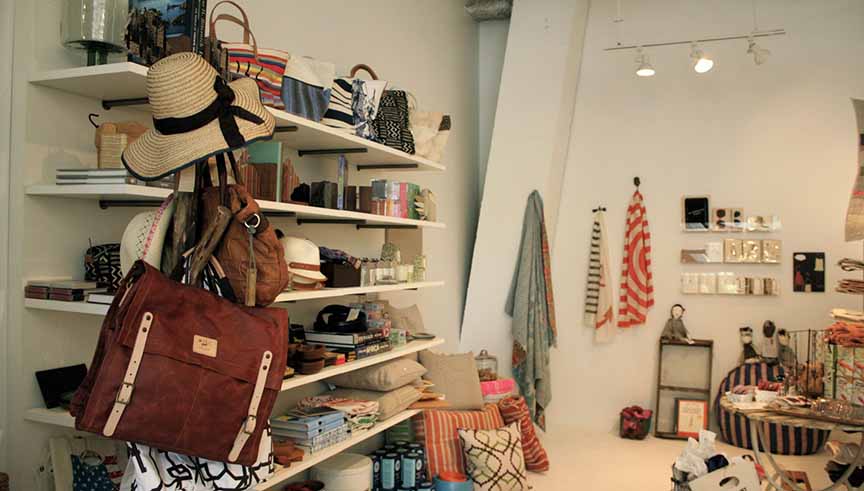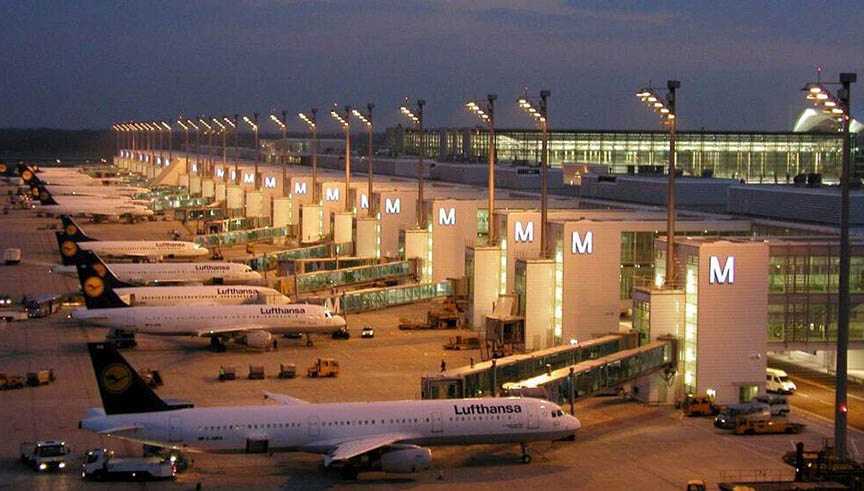
Munich Airport Ultimate Guide: Terminals, Entry Procedures & Best City Transportation Options
Munich International Airport (Flughafen München, MUC) is Germany’s second-largest airport and one of Europe’s busiest aviation hubs. Munich Airport is known for its efficient operations, seamless transfers, and excellent facilities, making it one of the best transit airports in Europe. Whether it’s your first time in Munich or you’re a frequent traveler, this airport offers seamless operations and excellent services to make your journey smoother. I’ll cover and provide detailed information on the terminal layout, immigration procedures, transportation options, and practical travel tips to help you reach the city center efficiently and start your Bavaria adventure with ease.
1. Overview of Munich Airport
1.1 Basic Information
- Name: Munich International Airport (Flughafen München)
- IATA Code: MUC
- Location: Approximately 35 km from Munich city center, in the Freising district of Bavaria, Germany
- Terminals: T1 (Terminal 1), T2 (Terminal 2)
- Main Airlines: Lufthansa’s major hub, serving many international airlines
1.2 Airport Facilities & Highlights
- World-class Shopping & Dining: Home to various German brands such as Rimowa, Hugo Boss, and traditional Bavarian restaurants.
- Seamless Transit Experience: Consistently rated as one of Europe’s best transit airports, with short transfer times and easy terminal connections.
- Munich Airport Beer Garden: Located in Terminal 2, Airbräu is the world’s only airport brewery.
- Efficient Public Transportation: Multiple options connect the airport to Munich city center conveniently.
2. Munich Airport Terminal Guide
Munich Airport has two main terminals (T1 & T2) and an additional satellite terminal (T3) dedicated to private and VIP flights.
2.1 Terminal 1 (T1)
- Airlines Served: Non-Lufthansa airlines such as Air France, British Airways, Emirates, and Qatar Airways.
- Structure: Divided into six sections: A, B, C, D, E, F (serving both Schengen and non-Schengen flights).
- Arrival Process:
- Schengen flights: Passengers proceed directly to baggage claim.
- Non-Schengen flights: Passport control is required before baggage claim.
- Departure Process:
- Check-in at the airline’s designated counters.
- Proceed through security and passport control (for non-Schengen flights).
- Head to the departure gates for boarding.
2.2 Terminal 2 (T2)
- Airlines Served: Lufthansa and Star Alliance members (e.g., SWISS, Austrian Airlines, Singapore Airlines).
- Features: Modern facilities with high automation, designed for a smoother transfer experience.
- Structure: Connected to the T3 satellite terminal via an underground automated train.
- Arrival Process:
- Schengen flights: Directly proceed to baggage claim.
- Non-Schengen flights: Passport control before baggage claim.
- Departure Process:
- Lufthansa passengers can use self-check-in and automated baggage drop services.
- Proceed through security and passport control before reaching departure gates.
2.3 Satellite Terminal (T3)
- Function: Extension of T2, mainly used for long-haul Lufthansa flights.
- Access: Connected to T2 via an underground people mover (takes ~1 minute).
3. Entry Procedures & Important Notes
Whether you’re visiting Germany for the first time or have traveled here multiple times, understanding the entry procedures at Munich Airport will help you pass through border control quickly, claim your luggage smoothly, and navigate customs efficiently. Below is a detailed guide on the entry process and transportation options from the airport to the city center.
3.1 Passport Control & Customs
Passport control is the first step in entering Germany. The procedures vary depending on your country or region of origin:
- EU/Schengen Zone Travelers:
- Can use electronic gates (E-Gates) or manned counters for a quick entry process.
- Only a valid ID card or passport is required—no visa is needed.
- If carrying a large amount of cash (€10,000 or more) or special items, additional declarations may be required.
- Non-Schengen Travelers (e.g., from China, the UK, the US, etc.):
- Must queue at manual passport control, where border officers check passports and visas (if applicable).
- You may be asked about your stay duration, purpose of travel, return ticket, and hotel reservations. It is recommended to have these documents ready, including hotel bookings, return flights, and travel insurance.
- If holding a Schengen visa, officers may check the validity, number of entries (single or multiple), and permitted stay duration—make sure your visa complies with entry requirements.
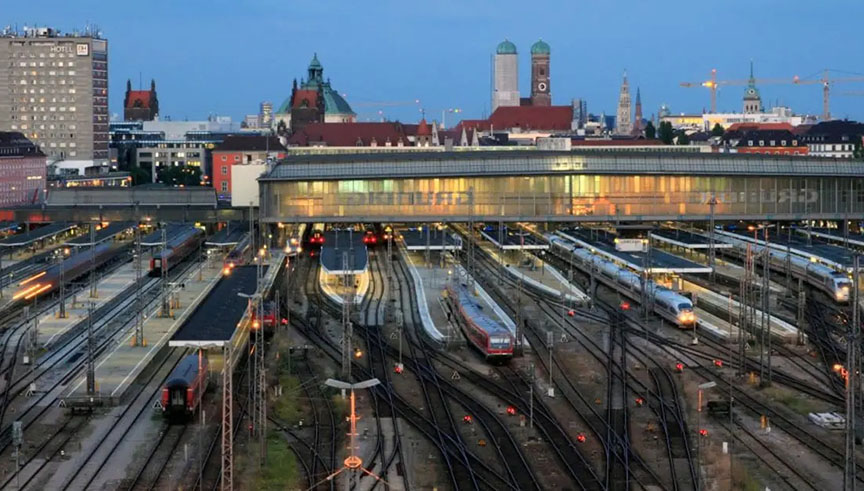
3.2 Baggage Claim
After passport control, proceed to the baggage claim area to collect your checked luggage.
For Schengen Area Flights:
- Passengers can go directly to the baggage claim area and check electronic screens for carousel information.
For Non-Schengen Flights:
- Passengers must complete passport control before proceeding to baggage claim.
Tips:
- If your luggage is lost or damaged, immediately report it at the Lost & Found service desk. Provide your boarding pass and baggage tag for tracking and compensation.
- Munich Airport’s baggage claim is highly efficient, with luggage typically arriving within 15–20 minutes.
3.3 Customs Declaration
After retrieving your luggage, proceed through customs. Select the appropriate lane based on your items:
- Green Channel (“Nothing to Declare”) – If you do not have any items requiring declaration, you can pass through directly.
- Red Channel (“Goods to Declare”) – If carrying over €10,000 in cash, luxury goods (e.g., expensive watches, jewelry), alcohol, tobacco, food products, or other taxable items, you must declare them to customs and pay the required duties.
Important Reminders:
- Medications: Some prescription drugs require a doctor’s note for entry.
- Food Items: Meat, dairy, and other restricted products may be subject to strict EU regulations—avoid bringing these to prevent confiscation.
- Tax Refunds: If you plan to get a VAT refund for your purchases in Germany, have your receipts stamped at the customs counter before heading to the airport’s tax refund office (see the “Shopping & Tax Refund” section below).
4. How to Get from Munich Airport to the City? Best Transport Options
Upon arrival at Munich Airport, you have several transportation options to reach the city center (e.g., Munich Central Station – Hauptbahnhof). Below is a breakdown of the best choices:
4.1 S-Bahn Airport Train (S1 & S8)
The S-Bahn train is the most cost-effective and convenient option.
- Lines: S1 and S8 connect the airport to Munich city center.
- Duration: 35–45 minutes to reach Munich Central Station.
- Ticket Price: €13 per trip (valid for the entire Munich public transport system). You can also use a Bayern Ticket or Day Pass (Tageskarte) for unlimited travel.
- Operating Hours: 04:00 – 01:00, trains run every 10–20 minutes.
- Where to Buy Tickets:
- Ticket machines in the airport (available in English and Chinese).
- Deutsche Bahn (DB) website or mobile app.
- Ticket counters at the station.
S1 vs. S8 – Which One to Take?
- S1 Line: Stops at multiple stations before reaching Munich Central Station.
- S8 Line: Faster route with fewer stops, also reaching the central station.
4.2 Lufthansa Express Bus
A great option for travelers with large luggage who prefer a direct connection to the city center.
- Operated by: Lufthansa Express Bus
- Duration: 45 minutes non-stop to Munich Central Station.
- Ticket Price: €11 one-way, €18 round-trip.
- Comfort Features: Spacious seating, dedicated luggage space, free Wi-Fi.
- Where to Buy Tickets: At airport counters, online, or directly from the driver.
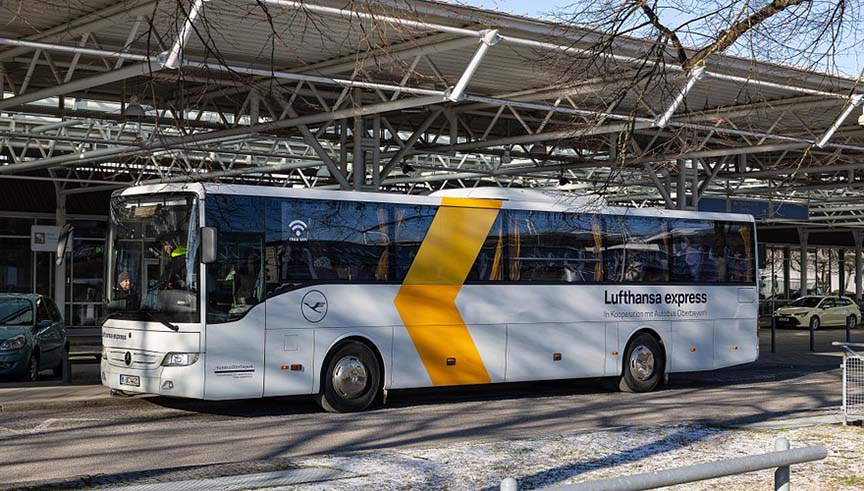
4.3 Taxi & Ride-Sharing (Uber, Bolt)
Ideal for groups, passengers with large luggage, or those who prefer private transport.
- Duration: 30–40 minutes to Munich city center.
- Cost: €70–90, depending on traffic and destination.
- Recommended Scenarios:
- Late-night arrivals when public transport is less frequent.
- Passengers with large suitcases who prefer door-to-door service.
- Fixed-rate airport taxis are available at official taxi stands—avoid unauthorized taxis to prevent overcharging.
4.4 Car Rental
If you plan to explore Bavaria (e.g., Neuschwanstein Castle, the Alps), renting a car is a great option.
- Best for: Travelers planning a road trip beyond Munich.
- Available Rental Companies: Hertz, Sixt, Avis, Enterprise, etc.
- Cost: €40–80 per day, depending on the vehicle and insurance.
- Requirements:
- An International Driving Permit (IDP) or a valid national license recognized in Germany.
5. Useful Travel Tips
5.1 Free Wi-Fi
- The airport offers 24-hour free Wi-Fi. Simply connect to “Free Wi-Fi – Munich Airport” and register to access.
5.2 Airport Lounges
- Lufthansa Business & First Class Passengers: Access to Lufthansa Lounges.
- Other Travelers: Can use Plaza Premium Lounge (entry via Priority Pass or paid access).
5.3 Currency Exchange & ATMs
- Best Option: Withdraw cash from ATMs for better exchange rates.
- Currency Exchange Services: Available at Travelex locations inside the airport.
5.4 Shopping & Tax Refunds
- Duty-Free & Local Brands: The airport features Braun, Zwilling, Rimowa, and more.
How to Get a VAT Refund:
- Customs Stamp: Get your receipts stamped at customs.
- Tax Refund Counter: Process your refund at the airport’s Tax Free Refund Desk.
- Refund Method: Receive cashback or a refund to your credit card.
You May Also Like

Unveiling Coffee Culture: Khartoum’s Best Cafés and Coffee Varieties
20/04/2023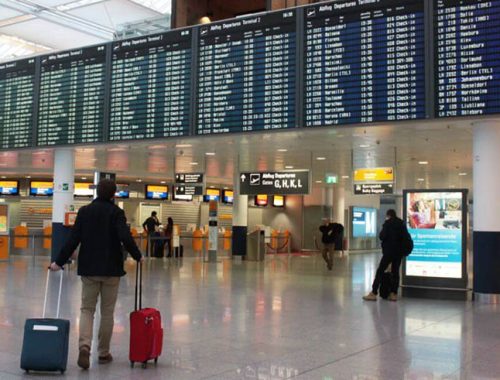
The Perfect Travel Guide: Complete Guide to Transportation, Travel Tips, and Shopping Souvenirs
10/02/2025